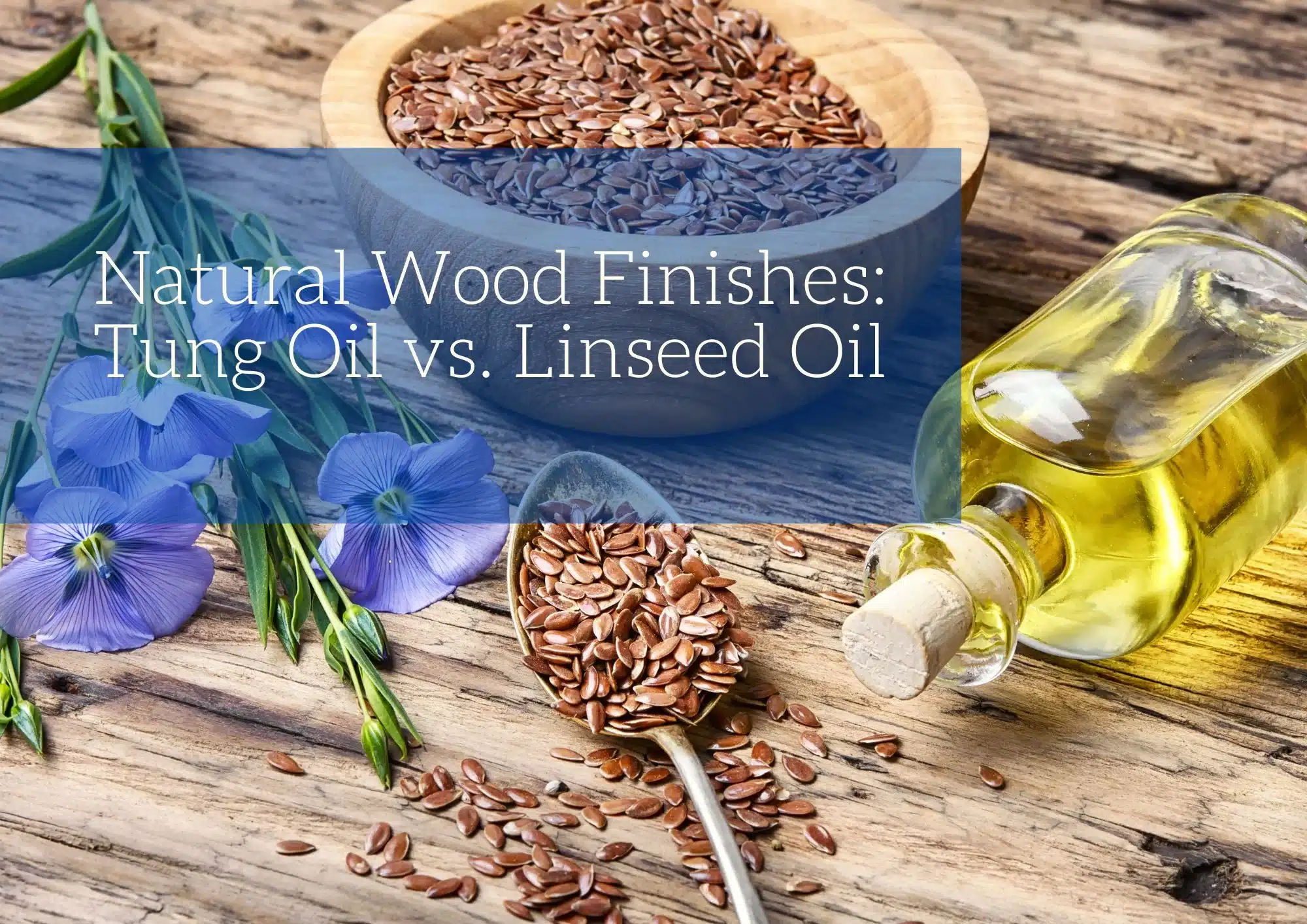When it comes to enhancing and protecting your wood projects, choosing the right finish is crucial. Among the many options available, tung oil and linseed oil stand out as popular choices for natural wood finishes. Both oils offer distinct benefits and characteristics, making them suitable for different applications. In this blog, we’ll explore the key differences between tung oil and linseed oil to help you make an informed decision for your woodworking projects.
Tung Oil
What is Tung Oil
Derived from the seeds of the tung tree (Vernicia fordii), tung oil has been used for centuries in Asia for its excellent wood-finishing properties. This natural oil penetrates deep into the wood, providing a durable, water-resistant finish that enhances the wood’s natural beauty.
Benefits of Tung Oil
- Water Resistance: Tung oil forms a hard, waterproof finish that protects wood from moisture and spills.
- Durability: Once cured, tung oil creates a tough, long-lasting surface that can withstand wear and tear.
- Natural Appearance: Tung oil enhances the wood’s natural grain and color, giving it a warm, rich look.
- Non-Toxic: Pure tung oil is safe for use on surfaces that come into contact with food, making it ideal for kitchen utensils and cutting boards.
Types of Tung Oil
- Pure Tung Oil: Thick consistency, leading to longer application and curing times; non-toxic and safe for food contact in its pure form.
- Tung Oil Blend: This blend is created by combining tung oil with resins for durability, drying agents for quicker curing, or solvents for easier application; it is not considered “non-toxic” or “food-safe.”
- Polymerized Tung Oil: Heat-treated to improve drying time; can be used as a wiping varnish with added varnish components, allowing for easy application by wiping onto the surface.
Linseed Oil
What is Linseed Oil?
Linseed oil is extracted from flax seeds and has been a staple in woodworking for centuries. There are two main types of linseed oil used in wood finishing: raw and boiled. Raw linseed oil dries slowly, while boiled linseed oil (which contains drying agents) dries faster, making it more practical for most woodworking projects.
Benefits of Linseed Oil
- Ease of Application: Linseed oil is easy to apply with a brush or cloth and penetrates deeply into the wood.
- Enhances Grain: Like tung oil, linseed oil enhances the natural grain and color of the wood, providing a warm, rich finish.
- Affordability: Linseed oil is often more affordable than tung oil, making it a cost-effective choice for large projects.
- Flexibility: Linseed oil’s finish remains flexible, allowing the wood to expand and contract without cracking.
Types of Linseed Oil
- Raw Linseed Oil: Produces a superb natural finish but requires several weeks between applications, making it impractical for ordinary DIY enthusiasts.
- Boiled Linseed Oil: No longer boiled with lead; it now contains metallic or petroleum-based driers to reduce curing time. While safer than lead-based products, it still releases VOCs and is not food-safe.
- Polymerized Linseed Oil: It gets heated for an extended period without oxygen, leading to a polymeric reaction. This process increases viscosity and speeds up drying time without needing additives, ensuring the oil remains VOC-free.
Choosing Between Tung Oil vs. Linseed Oil
Appearance
- Tung Oil: Pure tung oil provides a beautiful matte finish that enhances the wood’s natural color without significantly altering it. However, impure tung oil products may alter the wood’s color. Tung oil with additives can vary in appearance and gloss.
- Linseed Oil: Gives wood an amber tint that yellows over time, especially noticeable in lighter woods like birch and maple. Once dried, linseed oil produces a satin finish.
Application
- Tung Oil: Pure tung oil is simple to apply and almost impossible to mess up. Start by sanding the wood smooth and removing any dust and debris. Apply the oil evenly to the entire surface. As you notice dry spots, add more oil. Once the wood has stopped absorbing oil, wipe it with a dry towel. Allow the oil to dry for a few days before gently sanding and applying another coat. You can apply 5-7 coats for the best results.
- Linseed Oil: Using raw linseed oil is similar to using tung oil, with some minor differences. After sanding the wood and removing dust and debris, liberally apply linseed oil, following the grain, until the entire surface is coated. Allow the oil to penetrate the wood for 15 minutes before wiping away the excess. If the surface has dried significantly after 15 minutes, allow the wood to absorb additional oil for another 15 minutes before wiping clean. Apply at least 3 coats, allowing several weeks for each coat to cure, and polish with grade 0000 steel wool between coats.
Lifespan
- Tung Oil: While no tung oil finish will last forever, those kept indoors and away from sun and water will endure significantly longer than those exposed to the elements. Pay particular attention to the surface’s water-beading ability and the richness of the finish. Reapply tung oil whenever the wood appears dry and dull to maintain its protective and aesthetic qualities.
- Linseed Oil: Linseed oil should be reapplied at least once a year, or more frequently depending on how often the surface is used. Since linseed oil is not suitable for outdoor use, it should never be exposed to direct sunlight or water. Regular maintenance will ensure the wood retains its protective layer and aesthetic appeal.
Durability and Maintenance
- Tung Oil: When used correctly, pure tung oil produces a long-lasting wood finish. The finish soaks into the wood and cures, creating a highly water- and scratch-resistant coating. For items that are used frequently, regular cleaning and recoating are essential to maintain their longevity and water resistance.
- Linseed Oil: While linseed oil offers some durability, wood finished with linseed oil is prone to scratching and water damage, especially if the finish is not properly maintained. Recoating at least once a year is crucial to preserve the finish and protect the wood.
Both tung oil and linseed oil are excellent choices for natural wood finishes, each with its own set of advantages. Tung oil is ideal for projects requiring a durable, water-resistant finish, while linseed oil is perfect for those seeking ease of application and flexibility. Consider your project’s specific needs and your personal preferences to select the best oil for your wood finishing needs. Whether you opt for the rich, glossy finish of tung oil or the warm, matte appearance of linseed oil, you’ll be enhancing and protecting your woodwork with a time-honored, natural finish.










